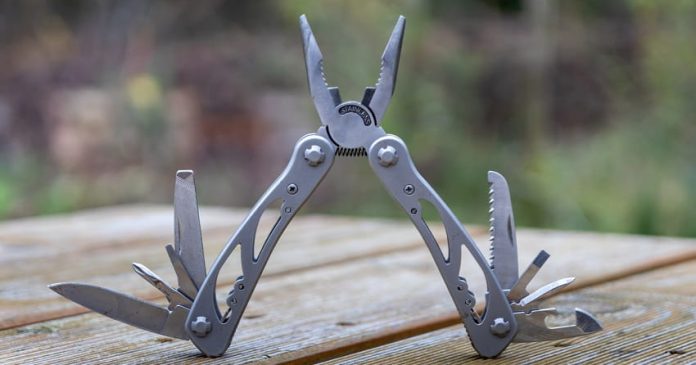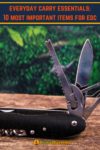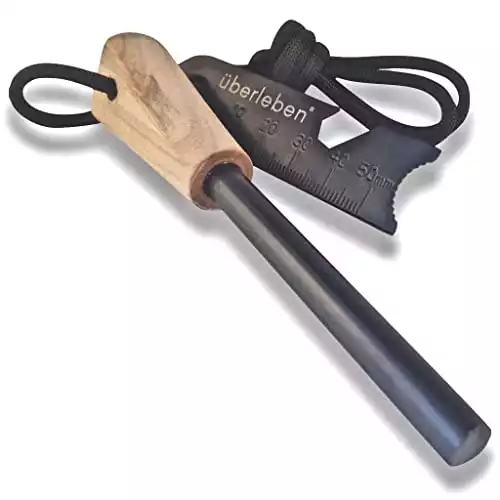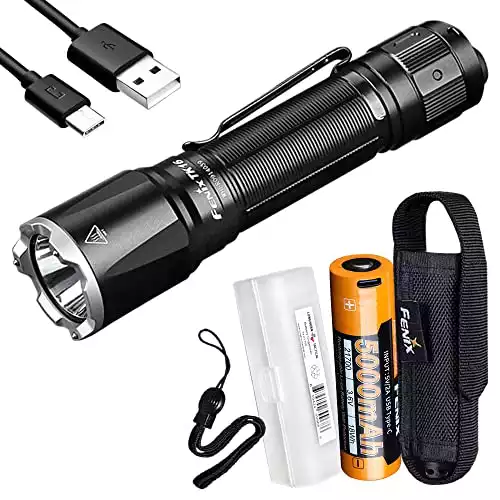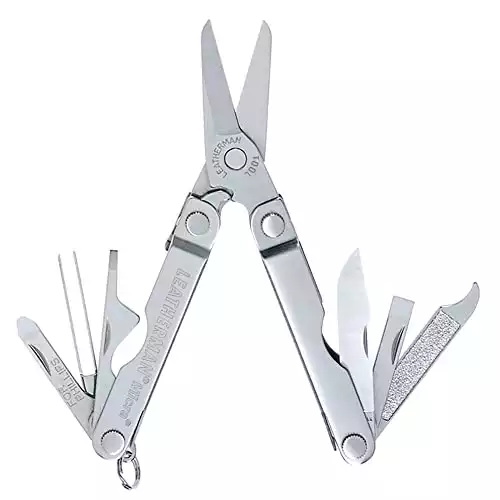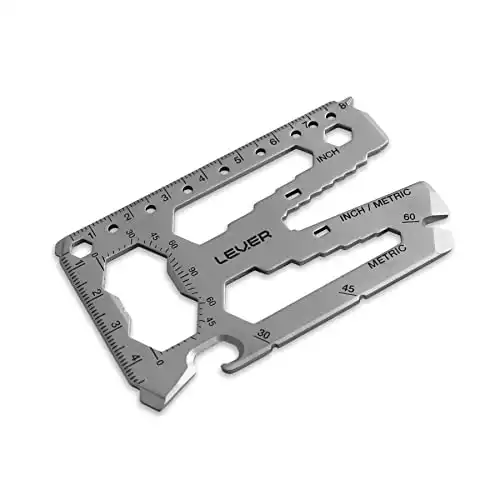Everyday Carry Gear isn’t just the crap you happen to keep in your pockets or bag.
EDC is a mentality in which you always have what you need to survive – whether it be “first world” problems like a broken shoelace or an actual SHTF disaster.
I’m not going to tell you what specific EDC items you need.
Instead, here are the essential EDC gear types you need for survival, regardless of how the day goes!
Essential #1 – Fire Starter
At the very minimum, keep a lighter as part of your EDC gear. But I find that smokers are really good at “borrowing” your lighter and never giving it back. Cheap lighters also fail regularly.
Get a quality lighter like a zippo or a special purpose all-weather fire starter instead.
Essential #2 Cordage
Once my bootlace broke. Cordage to the rescue!
When a man forgot his keys in his car, we retrieved them through the window using some cordage tied to a bent paperclip.
And there were the dozens of times I’ve needed to tie something together.
Aside from the many everyday non-emergency situations where cordage is handy, it could be your (literal) lifeline in a SHTF emergency. Read these survival uses for paracord, and you’ll see why it needs to be in your EDC gear.
Essential #3 First Aid Supplies
The chances are that you probably already have some first aid supplies on you. For example, you can easily make an arm sling by pulling your shirt up and pinning the bottom corner to your shoulder.
Most critical first aid doesn’t require supplies so much as knowledge, so take a first aid course ASAP! It is really useful for EDC to have supplies like moleskin, adhesive bandages, butterfly bandages, pain relievers, a safety pin or needle, and any meds you might need, like an EpiPen.
Essential #4 Flashlight
Aside from all those times that a flashlight helps you get your keys into the lock at night, an EDC flashlight is vital for blackouts, dark alleys, walking over bumpy terrain at night, and many other situations.
Sorry, but the flashlight on your cellphone just won’t cut it. Here’s a tactical flashlight that you can get from Amazon.
Essential #5 Knife
You might have a knife on your multi-tool, but that flimsy knife isn’t enough! A knife is one of the most essential pieces of survival gear, so your EDC knife better be sturdy and reliable.
Preferably it will be a fixed-blade, full-tang knife. However, a fixed-blade knife might be too bulky for your EDC, so a folding knife is okay too.
And check out these Top 10 Survival Knives Under $100
Essential #6 Keychain Multi-Tool
There are so many multi-tools to choose from that it gets overwhelming. To narrow down the options, list all the features you must have. Then make a list of the features which you’d like to have.
These are the multi-tool features that I absolutely can’t live without. Your list may be different:
- Pliers
- Wire cutters
- Tweezers
- Scissors
- Toothpick
- Saw blade
- Serrated knife
- Bottle opener
- Can opener
- Screwdriver
Leatherman makes a vast array of EDC tools. We like the Micra for EDC because it is so easy to carry. It weighs just 1.76 ounces and measures under 10 inches.
or #7 Single-Piece EDC Tools
These are a new generation of EDC gear. Unlike the bulky Leatherman-style EDC tools, these EDC items are meant to fit in your wallet. Some go on your keychain but aren’t as bulky as a folding multi-tool.
I love this type of EDC gear because it is cheap. If you live in a city, then I’d say your EDC gear better include a pocket pry bar like the one below in case SHTF, and you’ve got to get into locked places!
Essential #8 Communication Device
For pretty much everyone, this will mean a cellphone or smartphone. It’s worth noting that cell phones are VERY unreliable during disasters because of line overload. Make sure you have an emergency communication plan in place!
Essential #9 Cash
In 2014, a study found that 1 out of 10 people no longer carry cash – nearly half of those who have money carry less than $20.
I’m not saying you should carry wads of cash, but having some just-in-case money as part of your EDC is critical. Preferably nothing less than $50.
What if a major disaster suddenly struck? The ATMs (if they were even working) would quickly drain their supplies.
True, cash would be worthless after a huge SHTF disaster – but people wouldn’t realize that until a few days or weeks. Money would still be valuable for supplies or even buying safe passage out of the city (something my Bosnian friends mention in their war survival stories).
Essential #10 ID and Documents
Here’s a story that illustrates why it is essential to always have your ID on you as part of your EDC gear. In the early 2000s, I lived in a major city with a high crime rate. I was at work and got a call from a colleague saying she would probably be late. It turns out that a crime had occurred in her apartment building while she was out.
The police cordoned off the entire area and weren’t letting any residents through unless they could show ID, proving they lived there. Since she had left her ID inside, she couldn’t get into her apartment until much later in the day.
Along with your ID, here are some other documents you may want to keep on you at all times:
- Medical ID: This includes info like your blood type, allergies, and medical conditions you may have. It is vital for people like people with diabetes and those with epilepsy! Providing fast access to the info could save your life!!!
- ICE Number: You can program an “In Case of Emergency” number into your phone. First responders and hospitals now know to check for the ICE number so they can contact your loved ones in case of an emergency.
- Vehicle Documents: When traveling, don’t just keep these in your car. What would you do if your vehicle got stolen? You can make a remote copy to have access anywhere.
Yes, there is a lot of controversy around whether documents should be part of EDC gear. If you have medical problems like epilepsy, I’d say the benefits outweigh the risk – but I’ll let you decide for yourself.
What EDC gear do you always carry? Let us know in the comments.

